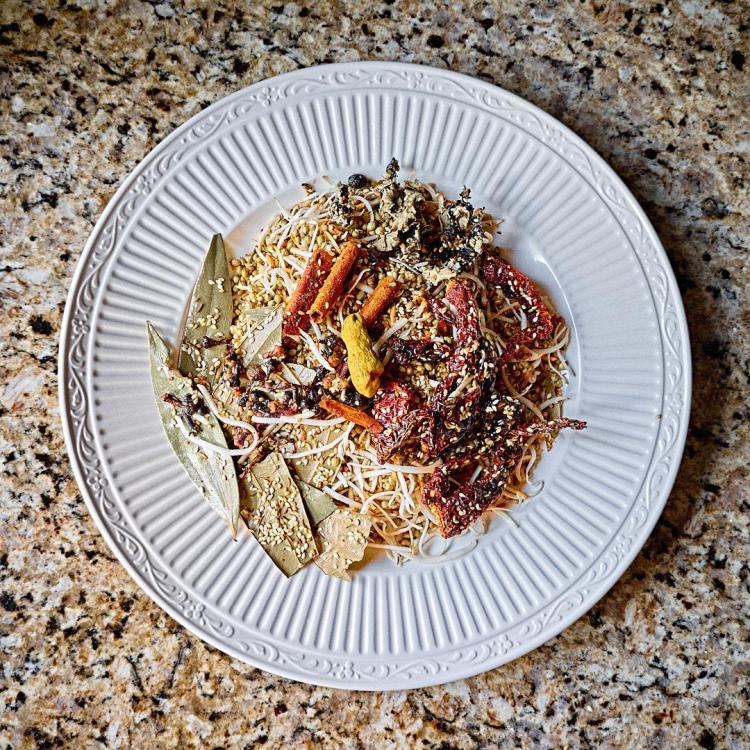-
Posts
95 -
Joined
Contact Methods
-
Website URL
https://ronaldntan.com
Profile Information
-
Location
Northern California, USA
Recent Profile Visitors
The recent visitors block is disabled and is not being shown to other users.
-

Show us your latest cookbook acquisitions!
Tan Can Cook replied to a topic in Cookbooks & References
On goose recipes, I found the following from Alwan-E-Nemat (Translation: "Colors of the Table"): A Journey Through Jahangir's Kitchen by Salsa Yusuf Hussain. Please see attached recipe pages along with cover of the book. This is "time travel" cookbook from Persian scholar Salma-ji. From the introductions of her book, she translated the Persian (Farsi) manuscript and modernize the recipes via down scale, etc. Because the real recipes were in banquet-portion for guests of the Fourth Mughal Emperor Jahangir (23 July 1547 – 28 October 1627). Maybe one of these days, I'll brave and make it. I practically have almost every single ingredient in spice collection except the goose! -

Show us your latest cookbook acquisitions!
Tan Can Cook replied to a topic in Cookbooks & References
It's been awhile. Today the 15th July, I received Ammi's Kitchen: Heirloom Recipes from Rampur by Pernia Qureshi. The book came out in India in June 2025. I managed to pool together tips money from cooking for a few families I serve. It took 11 days transit. Book arrived immaculately perfect, complete absence of any cosmetic defects! Corners are sharp, you can poke an eye out! If it arrived with cosmetic damages, e.g noticeable rubbing or dents/dings, etc, I know Cold Books will exchange with a copy that meets my stringent specs. It is currently my 45th book in my collection of regional South Asian (Desi) cuisine. Most of my books are are purchased from Cold Books in NYC. They are aware of me as one of their loyal customers of repeated business going back to March 2023. 🙂 It is not yet released in the US. I think it will be available April 2026 for North America, UK, etc. If you're the US, indie seller "Cold Books" from NYC on Biblio book marketplace has a few copies already on US-soil. Please excuse the reflections; book is covered in Brodart mylar. -
I recently borrowed The Flavour of Spice by Marryam H. Reshii from my library. It contains insightly essays and anecdotes on some of the major spices in use and contains a few (limited) recipes which showcases those spices in action in a recipe. You can find the book and preview it inside Google Books to see if that is book you are after.
-
@TdeV, Flavours of the Spice Coast is a cookbook on Kerala cuisine. It doesn't contain information about specific spices and show to use them in example spice mixes/blends.
-
Yup. I am AI. I am being trained on this forum. :-)
-
I do taste my foods. I am not blindly measuring gram-accuracy ingredients and serving direct. Maybe I should have clearer. As for scramble egg comment. I don't have a typed up recipe for it. Try not to take my statements seriously. I am aware my style and tone to writing gives off that "robotic" impression. Other than that, I am methodical and consistent.
-
Obviously we each have our personal style at cooking. What I am saying is that, if there is a foundational basis (standardized) recipe for your family and assuming that you don't change products and brand you use, theoretically, when you cook from your own notes, you won't need to "taste test" as if you're cooking for the first time. For me, every single food item(s) I cook for my family or small jobs have a standardized recipe in my Google Docs folder with helpful hints and tips I wrote for myself for future use of that food item(s). Earlier in the year, I treated myself to an elaborate biryani. The ingredients I prepared are recorded in gram-accuracy so that if I feel like it, I can recreate that exact recipe this week...if I wanted to. The only ingredient I did not record to gram accuracy are garnishes like coriander and mint leaves. Cooking is a both a science and art. If you want to remain consistent even with yourself, you need to incorporate the scientific methods in your cooking. That means getting used to taking helpful notes and record it in recipe style format at seen in cookery books. I also never ever cook without a pre-written recipe typed up. Like you said, during the cooking process, whatever your mood fancies, I may change ingredients ad libitum—which are reflected in my notes. This kind of record keeping takes me back to my organic and biochemistry labs at uni. Even in our upper division undergraduate labs, we had to know in full details the experiment. We basically summarize our lab manual, which include steps and hand draw apparati setups. On the day, we can't use the manual and have to rely on our lab notebook to succeed the experiment. It is probably too much to some people. This is how I feel more natural way around my home kitchen and I feel this is how I learn, explore, and improve my cooking.
-
We have be kind towards ourselves and chalk it up to learning experiences. How are you keeping track? Do you keep a detailed recipe of notes? Although I have a super small (selective) clientele I serve, I cook for my elderly retired parents and younger brother. I keep detailed notes and measurements in the style of recipes as seen in books. When finished cooking, I ask my parents for feedback on seasoning and the heat (chillies) and spice levels. The feedback gets entered at the section as "Notes or Commentary." The next time the food is being cooked, I have all the measurements recorded via a weighing scales. I have two: one for large ingredients and the smaller one for spices with accuracy to 0.01 grams. Also, I feel you should never serve guest(s) food and cuisines you've never cooked before. They should never be your "guinea pig," especially if your guest(s) are close friends/colleagues or paying.
-
I still have and use my i1 unit from Xrite. It is still working after all these years.
-
I see you know your way around both your kitchen and your camera. Well done. I am assuming you fixed or corrected for (if any) white balancing issues, yes? Then again, my monitor is calibrated via a dedicated colorimeter.
-
Fantastic food picture. 🙂 Well done.
-
Goda (Kala) Masala from Essential Marathi Cookbook The original recipe yields 1.5 kg of Goda (Kala) Masala! Traditionally, families in Maharashtra make enormous batches and distribute them among family members or friends. The original recipe from Kaumudi Marathé was provided in grams, making it easy to scale down by a factor of 8 for convenient storage in recycled jam jars. In my small batch, I opted to use dried Byadagi red chilies from Karnataka and dried Kashmiri red chilies from Kashmir. They are mild in heat and provide vibrant color. In this masala blend, coriander, coconut, and sesame dominate. The color turns dark brown, which is why it’s called "kala" (Hindi: dark color or black). By Tan Can Cook Modified and Adapted from Kaumudi Marathé Ingredients [Reduced by Factor 8 ( Yields ~194 Grams)] 14.36 g virgin coconut oil 1.88 g Indian bay leaves 1.88 g black stone flower (Parmotrema perlatum) 31.125 g grated dried coconut 6.19 g dried Byadagi red chilies 6.19 g dried Kashmiri red chilies 6.38 g cumin seeds 3 g black cumin seeds [Elwendia persica] 43.875 g white sesame seeds 62.625 g coriander seeds 3 g cassia buds [Cinnamomum spp.] 2.625 g cloves 2.625 g cinnamon sticks 1.13 g black peppercorns 3 g asafoetida 2.625 g turmeric powder 1.88 g kosher (coarse) salt Method Gently heat ½ tbsp oil on a griddle. Toast each ingredient separately, except turmeric and salt, in the order listed above for 2-7 minutes each. Toast over medium heat, stirring frequently, till fragrant. Toast larger quantities in batches. Reheat griddle and oil as required. Put toasted ingredients in a large bowl. Powder them fine, in batches if needed. Mix in turmeric. Store goda (kala) masala in jars. To store masala long term, mix in coarse salt, closing the lid tightly, and store in refrigerator. This is not the same recipe for Goda (Kala) Masala from The Essential Marathi Cookbook, but if you search for the name on YouTube, you will find people in Maharashtra sharing their recipes and making it in gigantic portions. Here is an example video in Marathi: .
-
Hi Mr. Weinstein sir. @weinoo Great to bump into you here. All my spices and blends are laser-focused onto blends from India, Pakistan, Bangladesh, and Iran. I have about 40+ cookbooks that I am still trying to cook through. Here in eGullet, I have started to share some of these masale blends I've made and have presented in the form of mise-en-place collage. I consider myself a "masalchi" in training.
-
Spices and herbs! I know right. They somehow kept multiplying. Hehe. Variety is the spice of life. As they say. :-)
-
As someone who loves spices and herbs. I like your collection.


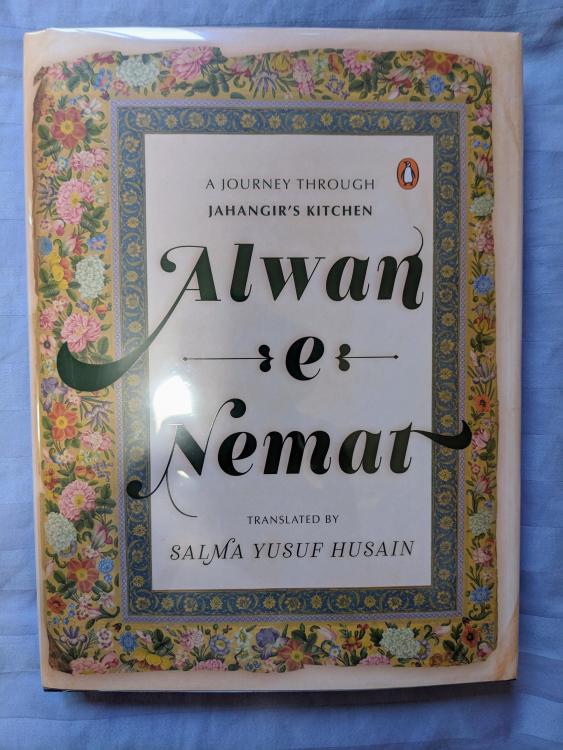
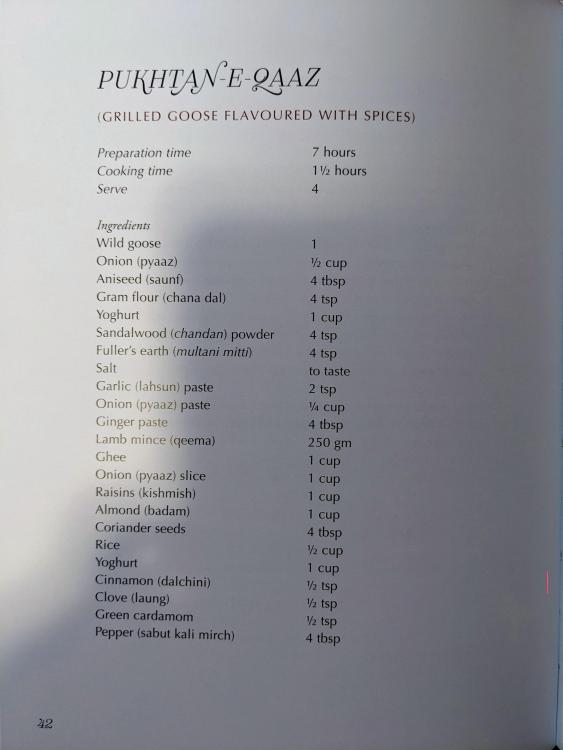
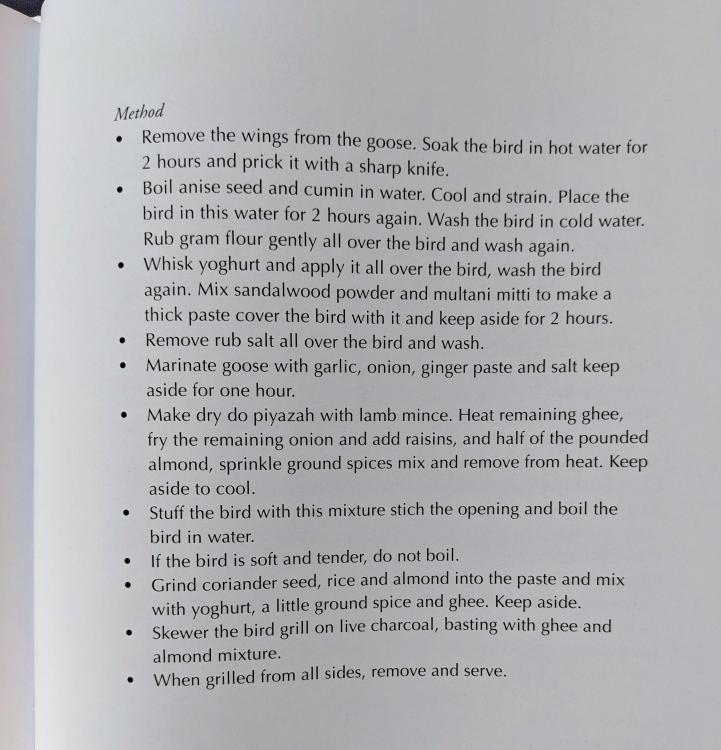

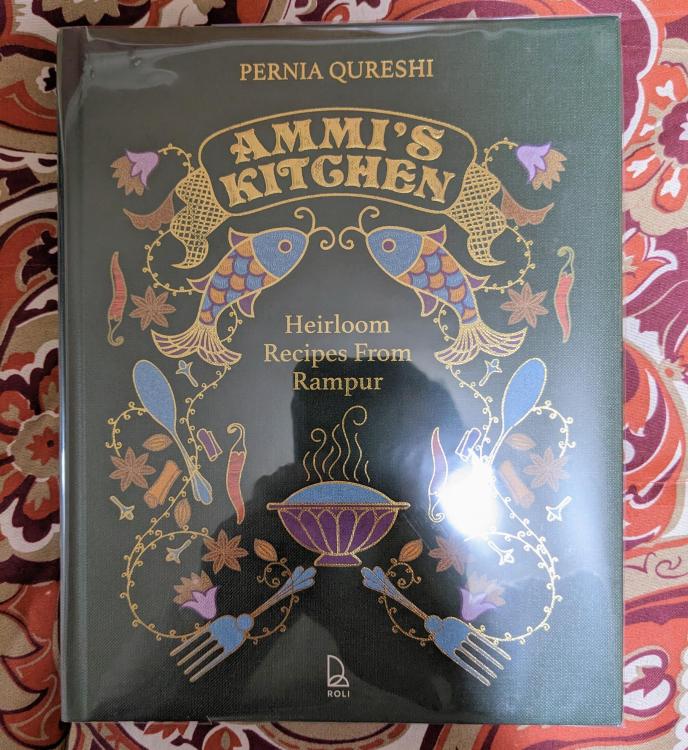
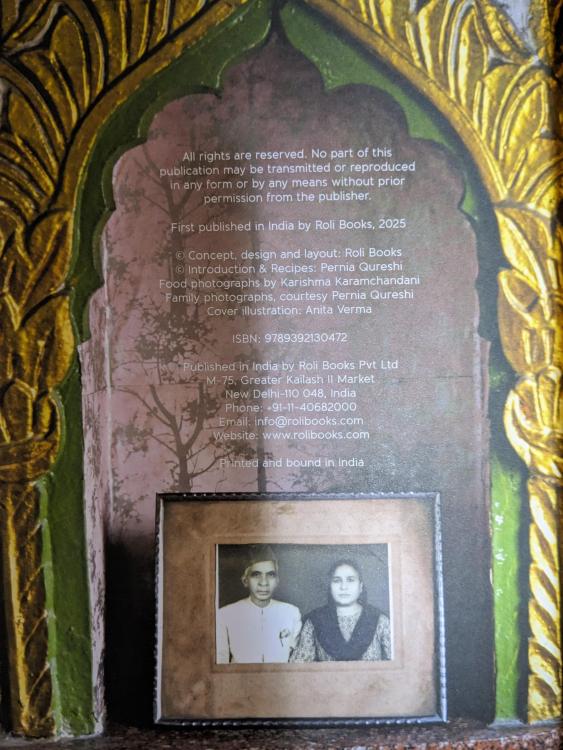
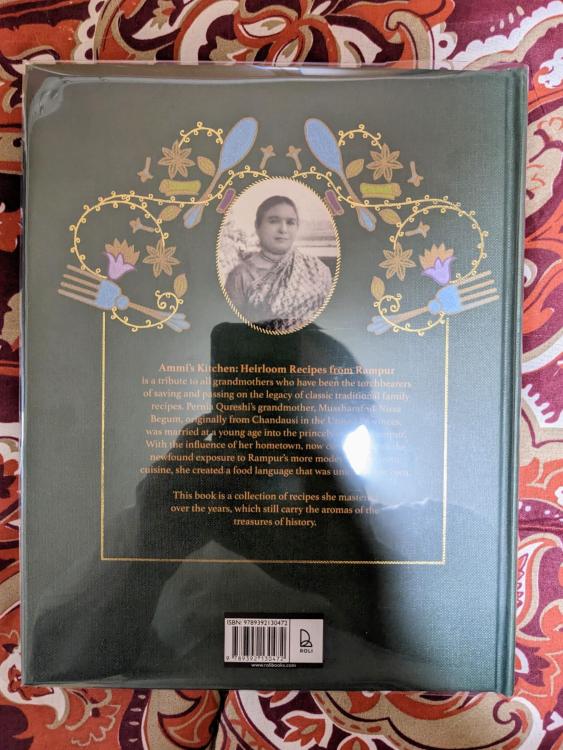


MasalafromEssentialMarathiCookbook.thumb.jpg.cf7a7baf410426d8811900a872c21159.jpg)
